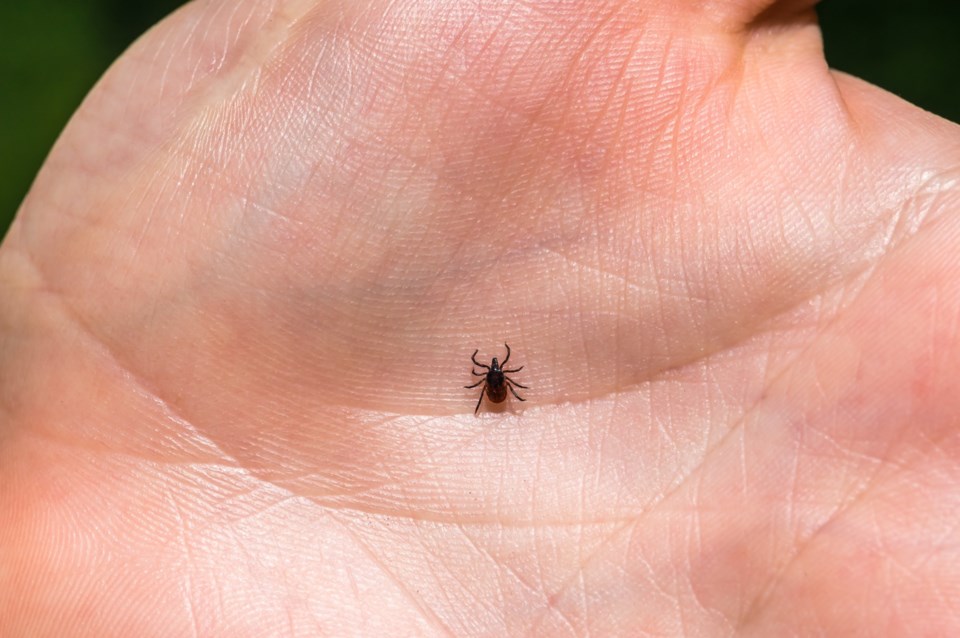NEWS RELEASE
MINISTRY OF HEALTH AND LONG-TERM CARE
****************************
Keep your summer free of tick bites
Ontarians reminded to lower their risk of lyme disease
Dr. Eric Hoskins, Minister of Health and Long-Term Care and Dr. David Williams, Ontario’s Chief Medical Officer of Health are reminding Ontarians to protect themselves from tick bites while enjoying or working outdoors this summer.
Lyme disease can be serious. If not identified early, infection can lead to recurring arthritis, neurological problems, numbness, and paralysis.
Lyme disease is spread to humans through the bite of an infected blacklegged tick.
Tick populations are established in known risk areas throughout the province.
In addition, multiple factors are allowing ticks to potentially establish populations in new areas throughout the province.
These factors include climate change, warmer winter temperatures and ticks’ ability to "hitch-hike" on suitable hosts, like birds or deer.
Ticks live near the ground in woodlands, tall grasses and bushes, and thrive in moist environments, like those found underneath old leaves on the forest floor.
The best way to prevent tick bites include:
• Wearing closed-toe shoes, long-sleeved shirts and pants
• Pulling your socks over your pant legs to prevent ticks from crawling up your legs
• Wearing light-coloured clothing to spot ticks more easily
• Using insect repellent containing DEET or Icaridin on clothing as well as on exposed skin, following the product instructions carefully
• Showering or bathing within two hours of being outdoors to remove ticks that can be on your skin but not yet attached
• Doing a daily full body check for ticks. Young blacklegged ticks can be as small as a poppy seed, so look carefully. Check children and pets for ticks as well
• Placing outdoor clothing through the dryer cycle for 60 minutes on high heat before washing to kill any ticks that may be hard to see
If you or a family member are experiencing serious symptoms and health effects, or have concerns about any symptoms, please contact your health care provider.
Quotes
“As a public health physician, I know that Lyme disease is a serious issue. Whether it’s hiking, camping, golfing, working or any other outside activity it is important that Ontarians take these simple steps to protect themselves from tick bites this summer.” - Dr. Eric Hoskins, Minister of Health and Long-Term Care
“The best defence against Lyme disease is to avoid being bitten by blacklegged ticks. That’s why Ontarians should remember to be tick smart while enjoying or working outdoors this summer, and take simple measures to reduce their and their family’s exposure to ticks that may be carrying the bacteria which causes Lyme disease.” - Dr. David Williams, Ontario’s Chief Medical Officer of Health
Quick facts
• Dogs and cats can carry the ticks into your home and place families at risk of being bitten. Check your pets for ticks daily and talk with your vet about keeping your pet protected from ticks.
• The most commonly known symptom of Lyme disease is an expanding, non-itchy to mildly-itchy skin rash. The rash can begin at the site of the tick bite between three and 30 days after exposure and usually grows in size for several days. Although many people never get or see a rash.
• When doing a full body check for ticks, pay close attention to areas such as your scalp, ankles, armpits, groin, naval and behind your ears and knees. Use a mirror to check the back of your body or having someone else check for you.
• Most cases of Lyme disease can be treated successfully with a few weeks of antibiotics if diagnosed and treated early. The earlier treatment is received the better.
Learn more
• Combating Lyme Disease Through Collaborative Action: Ontario’s 10-Step Education and Awareness Plan
• Learn how to identify and remove a tick from your body
• Find out more about Lyme disease
• Estimated risk areas: blacklegged ticks in Ontario
• Find your local Public Health Unit
****************************
